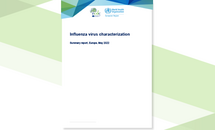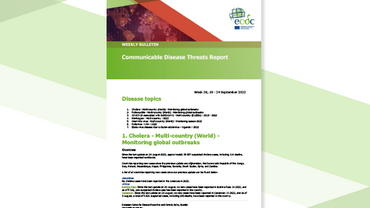Influenza virus characterisation, February 2020
This is the fourth report for the 2019 2019–20 influenza season.
Executive Summary
As of week 8/2020, 127 121 influenza detections across the WHO European Region had been reported; 76% type A viruses, with A(H1N1)pdm09 prevailing over A(H3N2), and 24% type B viruses, with 3 193 (98%) of 3 271 ascribed to a lineage being B/Victoria.
Since the Decemb er 2019 characterisation report report1, 25 shipments of influenza influenza-positive specimens from EU/EEA countries have been received at the London WHO CC, the Francis Crick Worldwide Influenza Centre (WIC). In total, 954 virus specimens, with collection dates after 31 August 2019, have been received. Of 151 A(H1N1)pdm09 test viruses from EU/EEA countries characterised antigenically since the last report, 129 (85%) showed good reactivity with antiserum raised against the 2019 2019–20 vaccine virus, A/Brisbane/02/2018, with those viruses showing poor reactivity carrying amino acid substitutions (notably N156K) in the HA1 150 150-loop region. The 159 test viruses with collection dates from week 40/2019 genetically characterised at the WIC have fallen within subclades of clade 6B.1 A: 139 6B.1A5A, 12 6B.1A5B, 1 6B.1A6 and 7 6B.1A7.
Since the last report, 122 A(H3N2) viruses have been characterised antigenically antigenically, the majority of which showed reduced recognition by antiserum raised against the current vaccine virus, egg egg-propagated A/K ansas/14/2017. While circulation of A(H3N2) viruses has varied considerably between countries in terms of numbers and genetic clades, globally there have been approximately equal proportions of clade 3C.3a and subgroups 3C.2a1b+T131K and 3C.2a1b+T135K viru ses detected. In total, 191 viruses have been characterised genetically at the WIC: 103 clade 3C.3a, 62 3C.2a1b+T131K, 19 3C.2a1b+T135K T135K-A and seven 3C.2a1b+T135K T135K-B.
The great majority of the 104 B/Victoria Victoria-lineage viruses characterised in this reporting period gave antigenic profiles characteristic of subgroup 1A(Δ3)B viruses represented by B/Washington/02/2019, the vaccine virus for the 2020 southern hemisphere season, with the minority of viruses giving a profile characteristic of 1A(Δ2) viruses represen ted by the 20192019–20 northern hemisphere vaccine virus B/Colorado/06/2017. In total, 125 viruses have been characterised genetically at the WIC: 118 subgroup 1A(Δ3)B and seven 1A(Δ2).
Download







